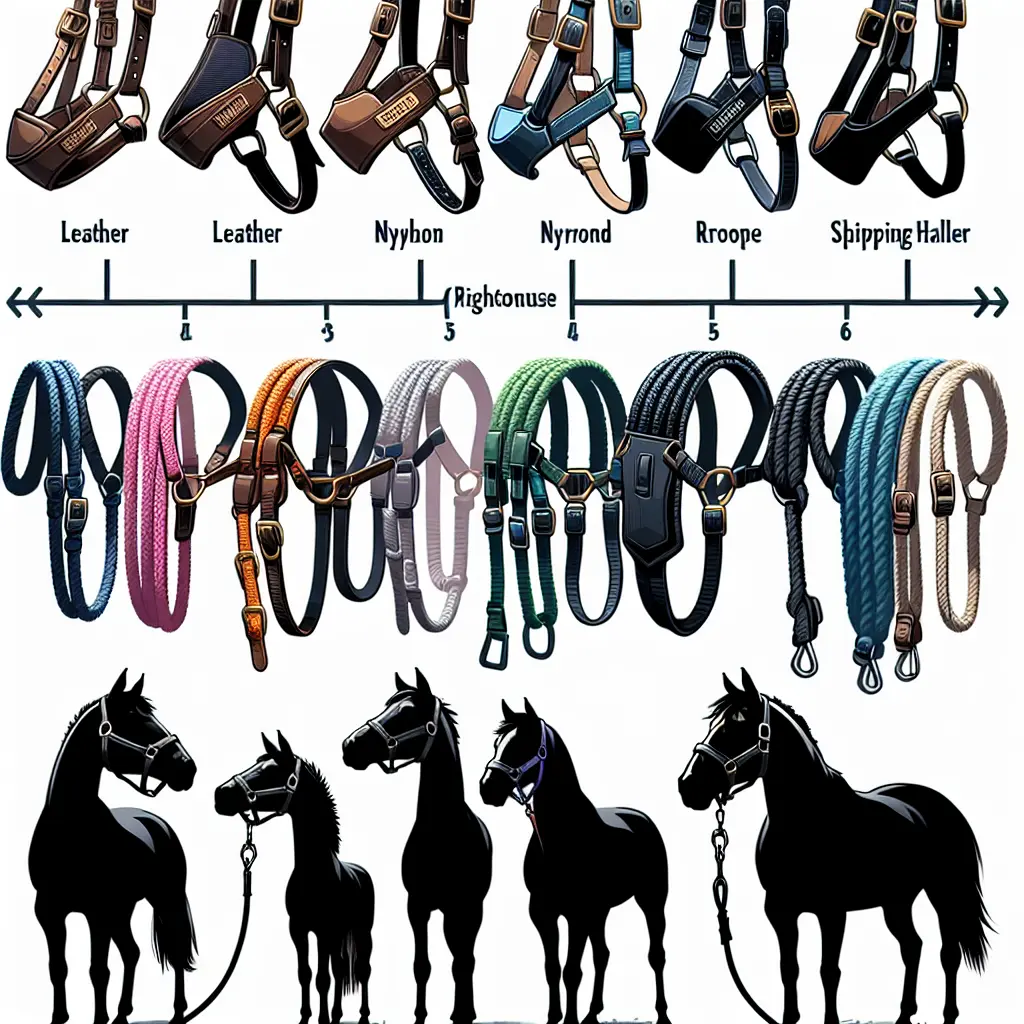Understanding Different Types of Horse Halters: How to Choose the Right One for Your Sensitive Horse
When it comes to selecting the right halter for your sensitive horse, it's crucial to consider several factors, including the material, fit, purpose, and your horse's personality. Here’s a comprehensive guide to help you make an informed decision.
Understanding the Importance of Halters
Halters are essential tools for handling horses, providing safety, control, and comfort. A good halter should be strong and durable enough to hold the horse safely, yet gentle enough not to cause discomfort or injury.

Types of Halters
There are several types of halters available, each with its own set of advantages and disadvantages.
Leather Halters
Leather halters are a popular choice due to their durability and comfort. They are made from natural materials that can break if the horse gets caught on something, such as a fence post or tree branch, which makes them a safe option for turnout. Leather halters can be repaired if broken and come in various styles, including padded options and personalized nameplates.
Nylon Halters
Nylon halters are lightweight, easy to clean, and durable. However, they are not ideal for turnout because they do not break if the horse gets caught, which can increase the risk of injury. Nylon halters are best used under supervision and are a good choice for their bright colors and ease of maintenance.

Rope Halters
Rope halters are another durable option, often used for groundwork training and natural horsemanship. They do not have hardware and are secured with specific knots. Rope halters are not suitable for turnout as they will not break if the horse gets caught. They are excellent for subtle communication and are popular among horses with behavioral issues.
Breakaway Halters
Breakaway halters are designed with safety in mind, particularly for turnout. These halters will break if the horse gets caught, reducing the risk of injury. They can be made from a mix of materials such as leather, nylon, and cotton, with leather tabs or a leather crownpiece that is designed to detach if the halter gets entangled.

Shipping Halters
Shipping halters are specifically designed for transporting horses. They often feature padding, such as sheepskin or synthetic fleece, to protect the horse’s face and absorb moisture. This makes them ideal for long trips in a horse trailer.
Grooming Halters
Grooming halters are designed for use during grooming sessions only. They are extremely loose, allowing brushes to reach underneath, but should never be used for turnout or handling as they can easily slip off or get caught on objects.

Choosing the Right Halter for Your Sensitive Horse
Material
For sensitive horses, the material of the halter is crucial. Leather and padded halters are often preferred because they provide comfort and can reduce pressure points. Nylon halters, while easy to clean, may not be as comfortable and should be used with caution.
Fit
The fit of the halter is paramount. Here are some key points to ensure a proper fit:
- The noseband should sit halfway between the horse's eyes and nostrils, with enough room to fit three fingers underneath.
- The cheek pieces should run parallel to the cheekbones without putting pressure on the face.
- The poll strap should sit behind the ears without pinching, allowing three or four fingers underneath.
- The throat strap should be adjustable and not too tight or too loose.
Purpose
Consider the intended use of the halter:
- For turnout, a breakaway halter is recommended for safety reasons.
- For trail riding, a padded halter can provide comfort.
- For training, a rope halter may be better for communication.
Personality
Your horse's personality plays a significant role in choosing the right halter:
- If your horse is nervous or easily spooked, a breakaway halter is a good option.
- If your horse is sensitive, a padded halter is recommended.
- If your horse is stubborn, a rope halter can provide better communication.
Safety Considerations
Safety is the top priority when choosing a halter. Here are some key safety considerations:
- Ensure the halter is strong and durable enough to hold the horse safely.
- Avoid using nylon or rope halters for turnout due to the risk of injury if the horse gets caught.
- Regularly inspect the halter for signs of wear and tear and replace it when necessary.
Conclusion
Choosing the right halter for your sensitive horse involves careful consideration of the material, fit, purpose, and your horse's personality. By understanding the different types of halters available and their specific uses, you can ensure your horse's comfort and safety.
For sensitive horses, leather or padded halters are often the best choice due to their comfort and safety features. Always ensure a proper fit and consider the intended use of the halter to make the most informed decision.
By following these guidelines, you can select a halter that not only meets your horse's needs but also enhances your overall horse-handling experience.


